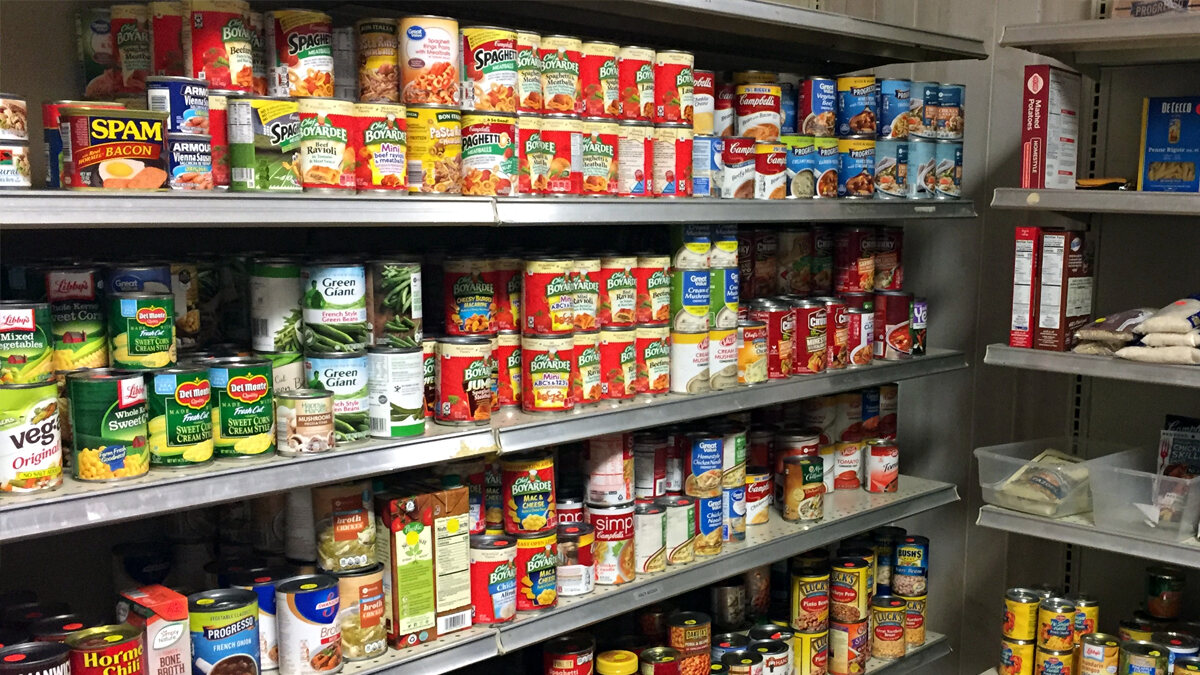

Articles
How To Store Food For Emergency
Modified: October 27, 2024
Learn how to store food for emergency situations with our informative articles. Discover tips and techniques to ensure you and your family are prepared for any crisis.
(Many of the links in this article redirect to a specific reviewed product. Your purchase of these products through affiliate links helps to generate commission for Storables.com, at no extra cost. Learn more)
Introduction
In times of emergencies, having a reliable and well-stocked supply of food is crucial. Whether you’re facing a natural disaster, a power outage, or any other unexpected event that disrupts the availability of food, being prepared can make all the difference. Proper food storage for emergencies ensures that you and your loved ones have access to nutritious meals when you need them most.
When disaster strikes, it may not be safe or convenient to venture out to the grocery store or rely on the usual sources of food. That’s why setting aside a designated emergency food supply is essential. It provides you with a sense of security, knowing that even in the face of adversity, you can sustain your nutritional needs.
But emergency food storage is not just about stockpiling random cans and pantry items. It requires careful planning, consideration, and proper execution to ensure that the food remains safe, edible, and nutritious for an extended period of time.
In this article, we will explore the importance of food storage for emergencies, the factors to consider before storing food, different types of emergency food storage, proper storage techniques, and how to create an effective food storage plan. By the end, you’ll have a comprehensive understanding of how to store food for emergencies and be ready to face any unexpected situation.
Key Takeaways:
- Proper food storage for emergencies is crucial for survival, peace of mind, and self-sufficiency. It ensures access to nutritious meals, protects against inflation, and allows for helping others in need.
- Canned foods, freeze-dried foods, MREs, and dry goods are reliable options for emergency food storage. Proper storage techniques, rotation, and monitoring are essential for maintaining the quality and safety of stored food supplies.
Read more: How To Store Water For Emergency
Importance of Food Storage for Emergencies
When a crisis strikes, access to food can become limited or completely cut off. Natural disasters, power outages, civil unrest, and other unforeseen events can disrupt the supply chain, leaving communities without access to grocery stores or restaurants. In such situations, having a well-stocked emergency food supply becomes vital. Here are some reasons why food storage for emergencies is crucial:
- Ensures Survival: Adequate food supplies are essential for survival during emergency situations. Having a reliable source of nutrition can help sustain individuals and families until assistance arrives or the situation improves.
- Provides Peace of Mind: Knowing that you have a well-prepared food supply in case of an emergency brings a sense of security and peace of mind. It eliminates the anxiety and uncertainty of not knowing where your next meal will come from.
- Allows for Self-Sufficiency: During emergencies, emergency services and relief organizations may be overwhelmed with demands. By having your own food storage, you can reduce the strain on limited resources, allowing those in dire need to access assistance while you rely on your own supplies.
- Promotes Health and Well-being: A well-planned emergency food supply ensures that you have access to a variety of nutritious, balanced meals. This helps maintain your overall health during stressful times and boosts your immune system, reducing the risk of falling ill.
- Protects Against Inflation and Food Shortages: In times of economic uncertainty or shortages, the cost of food can rise dramatically. By storing food in advance, you protect yourself from inflation and ensure that you have a stable food supply, even if prices skyrocket or availability becomes scarce.
- Allows for Helping Others: Having extra food storage not only benefits your own family but also allows you to help others in need. During an emergency, being able to share your provisions with neighbors, friends, or community members can make a significant impact and foster a sense of unity.
Overall, food storage for emergencies is a crucial aspect of preparedness. It provides the necessary sustenance, peace of mind, and self-reliance needed to navigate through challenging times. By taking the time to plan and build your emergency food supply, you are investing in your own well-being and the well-being of those around you.
Factors to Consider Before Storing Food
Before you start building your emergency food supply, there are several important factors to consider. Taking the time to understand these factors will ensure that your stored food remains safe, nutritious, and usable in the event of an emergency. Here are key considerations to keep in mind:
- Dietary Needs: Take into account the specific dietary needs of individuals in your household. Consider any food allergies or dietary restrictions when selecting and storing food items. It’s important to have a variety of options that meet the nutritional requirements of everyone in your family.
- Storage Space: Assess the available storage space in your home. Determine how much room you can allocate for your emergency food supply. Consider utilizing pantry shelves, closets, under-bed storage containers, or any other suitable storage areas.
- Temperature and Humidity: Optimal storage conditions are crucial for maximizing the shelf life of your food. Find a cool, dry place to store your emergency food supply. Avoid areas that are prone to high humidity, as this can affect the quality and longevity of the food.
- Expiration Dates and Shelf Life: Pay attention to expiration dates on food products and consider the shelf life of each item. Choose foods that have a long shelf life and rotate your stock to ensure freshness. Incorporate a system to monitor and track expiration dates to avoid waste and ensure you’re consuming your food before it expires.
- Nutritional Value: Aim to include a variety of food items that provide essential nutrients in your emergency food supply. Consider foods that are high in protein, healthy fats, complex carbohydrates, vitamins, and minerals. This will help maintain good health and provide necessary energy during challenging times.
- Food Preparation: Think about the cooking and preparation methods available during an emergency. Choose food items that are easy to prepare and require minimal cooking or equipment. Include ready-to-eat options, such as canned goods or prepackaged meals, that can be consumed without cooking in case there are limited cooking facilities.
- Familiarity and Preference: Store foods that you and your family are familiar with and enjoy eating. Having familiar and preferred food items can boost morale and alleviate stress during an emergency. It’s important to maintain a sense of normalcy and comfort even in challenging situations.
- Storage Containers: Invest in high-quality, airtight storage containers that are specifically designed for long-term food storage. These containers should protect against pests, moisture, and oxygen. Consider using food-grade buckets, Mylar bags with oxygen absorbers, or vacuum-sealed containers to maintain the quality and freshness of your stored food.
By carefully considering these factors, you can make informed decisions when building your emergency food supply. Taking the time to plan and address these considerations will ensure that your stored food remains safe, nutritious, and effective in sustaining you and your loved ones during an emergency.
Different Types of Emergency Food Storage
When it comes to emergency food storage, there are several different types of options available. Each type offers unique benefits in terms of shelf life, convenience, and nutritional value. Here are some of the most common types of emergency food storage:
- Canned Foods: Canned foods are a popular choice for emergency food storage due to their long shelf life and convenience. They are readily available and often require no cooking or refrigeration. Canned fruits, vegetables, soups, and meats can provide essential nutrients and are easy to incorporate into meals.
- Freeze-Dried Foods: Freeze-dried foods are lightweight, compact, and have an extended shelf life. They are created by removing moisture from the food while preserving its natural flavors and nutrients. Freeze-dried meals often just require the addition of water to rehydrate, making them a convenient option for emergencies.
- Dehydrated Foods: Dehydrated foods are similar to freeze-dried foods but undergo a different preservation process. Dehydration involves removing moisture from the food, resulting in a smaller and lightweight product. Dehydrated fruits, vegetables, jerky, and grains are popular options for emergency food storage.
- MREs (Meals Ready to Eat): MREs are complete meals packaged in durable pouches. They are specifically designed to withstand harsh conditions and have a long shelf life. MREs often come with an assortment of entrees, side dishes, snacks, and desserts, providing a well-balanced meal in a compact package.
- Dry Goods and Staples: Dry goods and staples include items such as rice, pasta, beans, flour, sugar, and various grains. These items are cost-effective, versatile, and have a long shelf life when stored properly. They can be easily incorporated into a variety of meals and are a staple in many emergency food storage plans.
- Emergency Food Bars: Emergency food bars are compact, dense, and calorie-dense bars that are specifically formulated to provide essential nutrients for survival. They often have a long shelf life and are an excellent option for a grab-and-go emergency kit or for situations where space is limited.
It’s important to consider the nutritional composition, shelf life, and preparation requirements when selecting the type of emergency food storage that best suits your needs. Assess your preferences, storage space, and specific dietary requirements to make an informed decision. Combining different types of emergency food storage can provide variety and flexibility, ensuring that you have a well-rounded and reliable food supply during emergencies.
Canned Foods
Canned foods are a classic and popular choice for emergency food storage. They offer a range of benefits that make them a reliable and convenient option when preparing for unforeseen circumstances. Here’s a closer look at why canned foods are an essential component of any emergency food supply:
Long Shelf Life: One of the greatest advantages of canned foods is their long shelf life. When properly stored in a cool, dry place, most canned goods can last for several years, making them a reliable source of nutrition in emergency situations. The canning process seals in the food and protects it from spoilage, allowing it to remain safely edible for an extended period.
Nutritional Value: Canned foods provide a wide range of essential nutrients. Fruits and vegetables are often packed at their peak freshness, preserving their vitamins and minerals. Canned meats, such as tuna or chicken, offer protein and vital amino acids. Additionally, many canned goods contain fiber and provide a good balance of macronutrients, making them a nutritious choice for emergency meals.
Convenience and Accessibility: Canned foods are incredibly convenient during emergencies. They require no refrigeration and can be consumed directly from the can, eliminating the need for cooking or complicated preparation. This convenience is particularly valuable when energy sources or cooking facilities may be limited. With canned foods, you can quickly access nourishment without the need for elaborate cooking equipment or extensive preparation time.
Wide Variety: Canned foods come in a vast array of options, ensuring that you can maintain a varied and balanced diet during emergencies. Whether you prefer vegetables, fruits, soups, beans, or meats, there is a canned option available to suit your taste and dietary needs. This variety allows you to create diverse meals and ensures that your emergency food supply remains appetizing and enjoyable.
Availability and Accessibility: Canned foods are easily accessible and widely available in most grocery stores. You can find them in virtually every food category, providing you with ample choices when building your emergency food supply. Additionally, the popularity and durability of canned goods make them a reliable option, as they are less likely to be impacted by temporary disruptions in the food supply chain during emergencies.
Cost-Effective: Canned foods are generally affordable, making them a cost-effective option for emergency food storage. Buying in bulk or during sales can further reduce costs. They offer a budget-friendly way to stock up on non-perishable food items that can sustain you and your family during unexpected events.
When selecting canned foods for your emergency food supply, prioritize those that are low in sodium and have minimal additives. Read labels carefully to ensure you are making nutritious choices. Additionally, it’s important to regularly check and rotate your canned food supply, consuming those with earlier expiration dates first and replacing them as needed.
Canned foods are a dependable and versatile option for emergency food storage. Stocking your pantry with a variety of canned goods ensures that you have a reliable source of nutrition during challenging times. By incorporating canned foods into your emergency food plan, you can feel confident knowing that you are prepared to meet your family’s needs in times of crisis.
Read more: How To Store Water For Emergencies
Freeze-Dried Foods
Freeze-dried foods have gained popularity as a convenient and long-lasting option for emergency food storage. These products undergo a specific preservation process that removes moisture while retaining the food’s nutritional value and flavor. Freeze-dried foods offer several benefits that make them an excellent choice for your emergency food supply. Here’s a closer look at freeze-dried foods:
Extended Shelf Life: One of the most significant advantages of freeze-dried foods is their exceptionally long shelf life. The freeze-drying process removes water from the food, preventing the growth of bacteria and other microorganisms that cause spoilage. As a result, freeze-dried foods can last for 20 years or even longer when stored properly, making them an excellent option for long-term emergency preparedness.
Nutritional Value: Freeze-dried foods retain most of their nutritional content throughout the preservation process. The low temperatures used in freeze-drying help preserve vitamins, minerals, and other essential nutrients, ensuring that the food remains nutritious and beneficial for your body. This makes freeze-dried foods a reliable source of sustenance during emergencies.
Lightweight and Portable: Freeze-dried meals are incredibly lightweight and compact, making them ideal for emergency situations. The freeze-drying process removes up to 98% of the food’s moisture, resulting in much smaller and lighter food items. This makes them easy to pack and transport, especially if you need to evacuate or move to a different location during an emergency.
Convenience and Easy Preparation: Freeze-dried foods are incredibly convenient and require minimal preparation. Most freeze-dried meals only need boiling water to rehydrate them and become ready to eat. In emergency situations where cooking facilities may be limited or unavailable, freeze-dried meals offer a quick and hassle-free way to get nourishment.
Variety and Taste: Freeze-dried foods come in a wide array of options, allowing you to create diverse and satisfying meals during emergencies. From fruits and vegetables to meats and entrees, there is a broad selection to choose from. The freeze-drying process helps retain the natural flavors of the food, ensuring that your emergency meals are not only nutritious but also delicious.
Minimal Waste: Freeze-dried foods have an advantage over fresh produce or canned goods when it comes to waste. Since the water content is removed during the freeze-drying process, you don’t have to worry about food spoiling or going to waste. Freeze-dried foods can be rehydrated in exact portions, minimizing leftovers and reducing unnecessary waste.
It’s important to store freeze-dried foods in a cool, dry place with low humidity to maintain their quality and longevity. Proper packaging, such as Mylar bags with oxygen absorbers or vacuum-sealed containers, can further protect the food from moisture, air, and light. Regularly check and rotate your freeze-dried food supply, consuming and replacing items as needed, to ensure you always have a fresh and reliable source of emergency sustenance.
Freeze-dried foods are a valuable addition to any emergency food storage plan. With their long shelf life, nutritional value, and convenience, they provide a practical solution for ensuring your family’s well-being during unexpected events. Incorporate a variety of freeze-dried meals into your emergency food supply to meet your dietary needs and add convenience to your emergency preparedness strategy.
Dehydrated Foods
Dehydrated foods are a practical and versatile option for emergency food storage. The dehydration process removes the moisture from food, allowing it to be preserved for an extended period while retaining its nutritional value. Dehydrated foods offer several benefits that make them an excellent choice for your emergency food supply. Here’s a closer look at dehydrated foods:
Long Shelf Life: Dehydrated foods have a significantly extended shelf life. By removing moisture, the growth of bacteria, mold, and yeast is inhibited, which helps prevent spoilage. Properly dehydrated foods can last anywhere from several months to several years, depending on the storage conditions and the specific food item. This makes dehydrated foods a reliable option for long-term emergency planning.
Nutritional Value: Dehydrated foods retain much of their nutritional content, including vitamins, minerals, and fiber. The preservation process removes water while retaining the essential nutrients, ensuring that the food remains nutritious and beneficial for your body. This makes dehydrated foods a valuable source of sustenance during emergencies when fresh produce may not be readily available.
Lightweight and Portable: Dehydrated foods are lightweight and easy to transport, making them ideal for emergency situations. The dehydration process removes the majority of the water content from the food, resulting in a significant reduction in weight and volume. This makes dehydrated foods highly portable and convenient, whether you need to evacuate or are on the move during an emergency.
Minimal Storage Space: Dehydrated foods take up minimal storage space compared to their fresh counterparts or other preservation methods. The removal of water from the food reduces the overall volume, allowing you to store a large quantity of food in a compact area. This is particularly beneficial if you have limited storage space in your home.
Easy Rehydration and Versatility: Rehydrating dehydrated foods is simple and requires minimal effort. Most dehydrated foods can be rehydrated by soaking them in water for a specific period or by simmering them in liquid. This versatility allows you to use dehydrated foods in a variety of recipes, including soups, stews, casseroles, and even as quick snacks, providing you with flexibility in your emergency meal preparation.
Cost-Effective: Dehydrating food is a cost-effective way to preserve perishables and minimize waste. Dehydrated foods can be purchased commercially or made at home using a food dehydrator. Buying in bulk during sales or preserving excess garden produce through dehydration can save money in the long run, making dehydrated foods an economical choice for emergency food storage.
When storing dehydrated foods, it’s essential to keep them in a cool, dry place to maintain their quality and shelf life. Using airtight containers or vacuum-sealed bags can further protect them from moisture, air, and light. Rotate your supply regularly and consume the oldest items first, replacing them as needed, to ensure freshness and optimal nutritional value.
Dehydrated foods provide a practical and long-lasting solution for emergency food storage. With their extended shelf life, nutritional benefits, and ease of use, dehydrated foods offer a reliable source of sustenance during challenging times. Incorporate a variety of dehydrated fruits, vegetables, meats, and grains into your emergency food supply to ensure a diverse and nutritious diet during emergencies.
MREs (Meals Ready to Eat)
MREs, or Meals Ready to Eat, are complete meals packaged in durable pouches, designed to provide sustenance in emergency situations. Originally developed for military use, MREs have become increasingly popular as a convenient and reliable option for emergency food storage. Here’s a closer look at why MREs are a valuable addition to your emergency food supply:
Long Shelf Life: One of the primary advantages of MREs is their extended shelf life. MREs are specifically designed to have a long shelf life and can remain edible for up to 5 years or more when stored in proper conditions. The individual components of MREs, such as entrees, sides, snacks, and desserts, are developed to withstand harsh conditions and maintain their quality over time.
Complete and Balanced Meals: MREs provide complete and balanced meals in a single package. Each MRE typically includes an entree, side dishes, bread or crackers, a dessert, and a beverage. These components are designed to provide a balanced mix of macronutrients and essential vitamins and minerals, ensuring that you receive proper nutrition during emergencies.
Convenience and Portability: MREs offer unparalleled convenience and portability. Each meal comes in a compact, lightweight package, making it easy to carry and store. MREs do not require refrigeration and can be consumed directly from the pouch, eliminating the need for cooking or extra dishes. This makes them a convenient option when cooking facilities are limited or unavailable during emergency situations.
Calorie-dense and Energy-rich: MREs are designed to provide high-calorie meals to sustain individuals during demanding situations. They are packed with energy-dense ingredients and offer a sufficient amount of calories to meet the increased energy requirements in times of crisis. This high energy content makes MREs suitable for individuals with strenuous physical activity or in need of an extra boost of energy.
Durable Packaging: MREs are packed in durable and waterproof pouches, ensuring the integrity and safety of the food inside. The packaging is designed to withstand rough handling, variations in temperature, and exposure to elements. This durability makes MREs a reliable option for emergency situations where traditional food packaging may not hold up.
Wide Range of Options: MREs are available in a variety of flavors and menu options, providing choices to suit different tastes and preferences. Whether you prefer beef, poultry, vegetarian, or international dishes, there is an MRE option available. This variety allows you to maintain a diverse and satisfying diet during emergencies.
It’s important to note that MREs contain preservatives and may have a higher sodium content compared to other emergency food options. While they can provide short-term sustenance during emergencies, they should not be the sole source of nutrition for an extended period. It’s recommended to include a combination of MREs, as well as other food options like canned goods or freeze-dried foods, in your emergency food supply to ensure a well-rounded diet.
When storing MREs, keep them in a cool, dry place away from extreme temperatures and sunlight. Regularly check the expiration dates and rotate your supply, consuming the oldest MREs first and replacing them as needed, to maintain freshness and quality. Additionally, be sure to familiarize yourself with the heating instructions provided with each MRE to ensure proper consumption.
MREs offer convenience, durability, and complete nutrition, making them a practical solution for emergency food storage. By including MREs in your emergency food supply, you can rest assured knowing that you have readily available meals for sustenance during unexpected events.
Store non-perishable food items in a cool, dry place away from direct sunlight. Rotate your stock regularly to ensure that items do not expire before you can use them.
Dry Goods and Staples
Dry goods and staples are essential components of any emergency food storage plan. They consist of non-perishable food items that have a long shelf life and provide the foundation for creating meals during emergencies. Including a variety of dry goods and staples in your emergency food supply ensures versatility and sustenance. Here’s a closer look at why dry goods and staples are important:
Long Shelf Life: Dry goods and staples have a remarkable shelf life compared to perishable items. These items, such as rice, pasta, beans, flour, sugar, and various grains, can last for years when stored properly in a cool, dry place with minimal exposure to oxygen and sunlight. This longevity makes them excellent options for long-term emergency planning.
Cost-Effective: Dry goods and staples are generally affordable, allowing you to build and expand your emergency food supply without breaking the bank. Buying in bulk or during sales can help further reduce costs. Additionally, these items are commonly available and can be purchased at most grocery stores or online, making them accessible to everyone.
Versatile Ingredients: Dry goods and staples offer versatility in meal preparation. They serve as the backbone of many recipes, providing the necessary carbohydrates, proteins, and other essential nutrients. Whether you’re preparing a hearty soup, a comforting bowl of rice and beans, or baking homemade bread, dry goods and staples play a crucial role in creating delicious and satisfying meals during emergencies.
Nutritional Value: While individual dry goods and staples may vary in their nutritional content, they generally provide essential nutrients required for survival. Whole grains, such as brown rice or whole wheat pasta, offer fiber, vitamins, and minerals. Legumes and beans are excellent sources of protein and dietary fiber. By incorporating a variety of dry goods and staples, you can ensure a well-rounded and nutritious diet during emergencies.
Minimal Preparation: Most dry goods and staples require minimal preparation, making them ideal for emergency situations. Rice, pasta, and grains typically require boiling, while canned beans may only need to be heated. Flour can be used for baking bread or making other homemade staples. Their simplicity helps conserve energy and resources, making them convenient options when cooking facilities or fuel may be limited.
Familiar and Comforting: Dry goods and staples often represent familiar and comforting foods that bring a sense of normalcy during emergencies. They can provide a level of comfort and reassurance, reminding us of familiar meals we enjoy during more stable times. This can greatly impact morale and well-being during challenging situations.
When storing dry goods and staples, it’s important to use proper containers that are airtight and moisture-resistant. Plastic or glass containers with secure lids, Mylar bags, or food-grade buckets work well for long-term storage. Label your containers with the contents and expiration dates, and regularly rotate your stock, using the oldest items first, and replacing them as needed to maintain freshness and quality.
By including a variety of dry goods and staples in your emergency food supply, you ensure a reliable source of sustenance and the ability to create well-rounded meals. Incorporate these versatile ingredients into your emergency food plan to prepare for unforeseen events and maintain a sense of normalcy during challenging times.
Read more: How To Finance Emergency Home Repair
Proper Storage Techniques
Proper storage techniques are essential for maintaining the quality, safety, and longevity of your emergency food supply. By following these guidelines, you can ensure that your stored food remains fresh, nutritious, and safe for consumption during emergencies. Here are some crucial storage techniques to consider:
- Cool, Dry Location: Choose a cool, dry location in your home for storing your emergency food supply. Ideally, the storage area should be away from direct sunlight and fluctuations in temperature. High temperatures and humidity can degrade the quality of the food and reduce its shelf life.
- Airtight Containers: Invest in high-quality, airtight containers specifically designed for long-term food storage. Use food-grade buckets, Mylar bags with oxygen absorbers, or vacuum-sealed containers to protect against moisture, pests, and oxygen. Ensure that all containers are properly sealed to maintain the freshness and quality of the food.
- Labeling and Rotation: Label each container with the contents and expiration dates. Implement a rotation system to ensure that you consume the oldest items first and replace them as needed. Regularly check your inventory and update your storage plan accordingly to prevent any items from expiring unused.
- Separation of Foods: To prevent cross-contamination and preserve quality, separate different types of foods in your storage area. Keep raw and cooked foods separate, and use separate containers for different food categories, such as canned goods, dried goods, and freeze-dried foods. This helps maintain the integrity of each item and reduces the risk of spoilage or contamination.
- Pest Prevention: Ensure that your storage area is free from pests by keeping it clean and implementing proper pest control measures. Seal any gaps or cracks that may serve as entry points for insects or rodents. Regularly inspect and monitor your stored food for signs of pest activity, and promptly discard any items that are infested or compromised.
- Regular Inspections: Regularly inspect your emergency food supply for any signs of damage, spoilage, or expiration. Check for dents, bulges, or other abnormalities in canned goods. Observe for any signs of moisture or mold in dehydrated or freeze-dried foods. Discard any items that have surpassed their expiration date or show signs of deterioration.
- Temperature Monitoring: Consider using a temperature monitoring device in your storage area to ensure that it remains within the recommended temperature range. Extreme temperatures can accelerate food spoilage and shorten shelf life. Regularly check and adjust the storage environment as needed.
- Secure Location: Store your emergency food supply in a secure location that is easily accessible and known to all family members. In case of an emergency evacuation, ensure that your food storage area can be easily transported or that you have a plan in place to grab essential food items quickly.
By applying these proper storage techniques, you can maximize the shelf life, quality, and safety of your emergency food supply. Remember to periodically review and update your storage plan, replacing expired items and adjusting quantities based on your family’s needs and any changes in dietary requirements. With proper storage, you can have peace of mind knowing that your emergency food supply is ready to sustain you during unforeseen events.
Choosing the Right Containers
Choosing the right containers is essential for effectively storing your emergency food supply. The proper containers will help preserve the quality, freshness, and longevity of the stored food. Here are some important factors to consider when selecting containers for your emergency food storage:
- Airtightness: The primary function of any container used for food storage is to provide an airtight seal. This prevents moisture, air, pests, and other contaminants from affecting the food. Look for containers with secure, tightly fitting lids that create a strong seal to maintain the integrity of the stored food.
- Material: Choose containers made of materials suitable for long-term food storage. Food-grade plastic, glass, or metal containers are commonly used options. Ensure that the chosen material is free from toxins or chemicals that can leach into the food, compromising its safety and quality.
- Durability: Select containers that are durable and able to withstand potential impacts, handling, and transportation. Look for containers that are resistant to cracking or breaking, as well as those that can tolerate different temperature environments. Durability is crucial for maintaining the integrity of the containers and preventing any contamination or spoilage.
- Size and Capacity: Consider the size and capacity of the containers based on your storage needs and available space. Choose containers that are large enough to hold an adequate amount of food but still manageable for handling and stacking. It’s also helpful to opt for containers in varying sizes to accommodate different food items and portion sizes.
- Transparency: Opt for containers that are transparent or have clear lids, allowing you to easily see the contents without opening them. This feature enables quick and efficient inventory management, helping you easily identify what items are stored and their expiration dates.
- Stackability: Prioritize containers that are stackable, allowing you to maximize storage space and keep your storage area organized. Stackable containers make it easier to access and rotate your food supply, ensuring that you use the oldest items first and facilitating efficient storage management.
- Protection from Light: Some food items, especially those that are light-sensitive, require protection from sunlight or other sources of light. Dark-colored or opaque containers can provide this light protection, keeping the stored food safe from light-induced degradation and nutrient loss.
- Easy to Clean: Look for containers that are easy to clean and maintain. Containers with smooth surfaces and removable lids make cleaning quick and convenient. Dishwasher-safe containers can be especially useful for effortless cleaning and sanitation.
Consider investing in a variety of containers to suit different types of foods and storage needs. For example, food-grade buckets with airtight lids are ideal for storing bulk goods like grains, beans, or flour. Vacuum-sealed bags or Mylar bags with oxygen absorbers are popular for long-term storage of dehydrated or freeze-dried foods. Glass jars or food-grade plastic containers work well for canned or preserved items.
Remember to label your containers with the contents and expiration dates for easy reference and inventory management. Regularly inspect and evaluate your containers for any signs of wear, damage, or compromised seals, replacing them as necessary to maintain the effectiveness of your emergency food storage system.
Choosing the right containers is a critical step in preserving the quality and longevity of your emergency food supply. By selecting containers that are airtight, durable, stackable, and suitable for long-term food storage, you can ensure that your stored food remains fresh, safe, and ready to sustain you during unexpected events.
Creating a Food Storage Plan
Creating a food storage plan is a crucial step in ensuring that you have a well-prepared emergency food supply. A thoughtful and organized approach will help you determine what and how much food to store, as well as establish a system to rotate and replenish your inventory. Here are some key steps to consider when creating a food storage plan:
- Assess Your Needs: Start by assessing the specific needs of your household. Consider factors such as the number of family members, any dietary restrictions or allergies, and the duration you want your emergency food supply to last. This assessment will help you determine the quantity and variety of food items you need to store.
- Set Goals: Establish achievable goals for your food storage plan. Determine how many days, weeks, or months you want your emergency food supply to sustain your household. Having a specific goal in mind will guide your purchasing and storage decisions.
- Diversify Your Selection: Include a diverse range of food items in your emergency food supply to maintain a balanced diet. Aim for a mix of proteins, carbohydrates, fruits, vegetables, and essential pantry staples. This variety will help ensure that your family receives adequate nutrition during emergencies.
- Calculate Quantity: Determine the quantity of food items needed to meet your desired duration. Take into account recommended daily caloric intake and adjust it based on your family’s needs. Consider serving sizes and the number of meals per day to calculate the total quantity needed for each food item.
- Budget and Prioritize: Evaluate your budget and prioritize the purchase of food items accordingly. Focus on acquiring essential items first and gradually work towards expanding your storage. Buying in bulk, taking advantage of sales, or considering long-term storage options like freeze-dried or dehydrated foods can help stretch your budget without compromising quality.
- Storage Space: Determine the available storage space in your home and plan accordingly. Identify suitable locations, such as pantries, closets, or dedicated shelving units, where you can store your emergency food supply. Maximize vertical space and consider utilizing storage containers or racks to keep your storage area organized and accessible.
- Establish Rotation System: Implement a rotation system to ensure that your food supply stays fresh and consumable. Use the “first in, first out” (FIFO) method, placing newer items behind older ones. Regularly check expiration dates and incorporate soon-to-expire items into your everyday meals to maintain a constant rotation and avoid waste.
- Tracking Inventory: Keep a record of your inventory to track what you have stored and when items need replenishing. Create a simple spreadsheet or use online inventory management tools to help you keep track of quantities, expiration dates, and usage. Regularly update and monitor your inventory to stay organized and prepared.
- Include Non-Food Items: Consider including non-food items in your emergency storage plan, such as water, hygiene supplies, and cooking essentials. These items are vital for maintaining sanitation, staying hydrated, and ensuring you have the necessary tools during emergencies.
- Educate and Train: Ensure that all family members are aware of the emergency food storage plan and understand how to access and utilize the stored food. Provide information on the rotation system, cooking methods, and any special instructions for specific food items.
Regularly review and update your food storage plan to reflect changes in dietary needs, family size, or any other factors that may impact your emergency preparedness. Stay informed about recommended shelf life and storage conditions for different food items to maintain their quality and safety.
By creating a comprehensive food storage plan, you can build and maintain a reliable emergency food supply that meets your family’s needs. This level of preparedness will provide peace of mind and ensure you are well-equipped to face unexpected events.
Rotation and Monitoring of Food Supplies
Rotation and monitoring of food supplies are essential practices for maintaining the freshness, quality, and safety of your emergency food storage. Proper rotation ensures that older items are used first, minimizing waste and ensuring that your stored food remains viable for consumption during emergencies. Monitoring your food supplies allows you to track expiration dates, identify any signs of spoilage or damage, and take timely action. Here are some key aspects to consider when it comes to rotation and monitoring of your food supplies:
- First In, First Out (FIFO) Method: Employ the “first in, first out” (FIFO) method when organizing your food storage. Arrange your supplies so that the oldest items are placed in front and easily accessible, while newer items are placed behind. This practice helps ensure that the older items are consumed first, maintaining the freshness and longevity of the remaining stock.
- Regular Checkups: Regularly inspect your food supplies to assess their condition. Check for any signs of spoilage, such as bulging or dented cans, packaging damage, or unusual odors. Discard any items that show signs of contamination, deterioration, or if their expiration date has passed.
- Date Monitoring: Label your stored food items with their purchase or expiration dates to facilitate easy monitoring. This allows you to keep track of the age of each item and make informed decisions when planning meals or replacing expired items. Use a system that works best for you, such as colored stickers or a inventory management spreadsheet, to clearly indicate the dates.
- Regular Consumption: Incorporate your stored food supplies into your everyday meals to ensure regular consumption and rotation. Include these items in your meal planning and cooking to prevent them from sitting idle for too long. This practice also allows you to become familiar with the taste and preparation methods of various emergency food items.
- Proper Storage Conditions: Maintain proper storage conditions to maximize the shelf life of your food supplies. Ensure that the storage area remains cool, dry, and free from direct sunlight. Avoid temperature fluctuations and high humidity, as they can expedite spoilage. Be mindful of the storage requirements for specific food items, following the recommended guidelines provided on the packaging.
- Regular Inventory Management: Keep an organized record of your food inventory and regularly update it. Track quantities, expiration dates, and usage patterns. This information helps you identify items that need replenishing, plan meals based on the available supplies, and reduce the risk of consuming expired or compromised products.
- Replenishment and Rotation Schedule: Establish a schedule for replenishing your food supplies based on expiration dates and usage. Set reminders to check and update your inventory regularly. Plan for timely replacement of items that are nearing their expiration dates or have been consumed. This ensures that your emergency food supply remains well-stocked and up-to-date.
- Education and Training: Educate your entire household about the importance of rotation and monitoring of food supplies. Teach family members how to identify signs of spoilage or damage and what actions to take when such instances occur. Encourage everyone to participate in inventory management and involve them in meal planning to increase awareness of the stored food items.
Successful rotation and monitoring of food supplies are key factors in maintaining a reliable and effective emergency food storage system. Regular inspections, proper storage conditions, and keeping track of expiration dates are essential practices that ensure the safety and longevity of your supplies. By adhering to proper rotation and monitoring techniques, you can have confidence in the quality and nutrition of your stored food, providing peace of mind during unexpected emergencies.
Read more: What Is A Plumbing Emergency
How Long Can Food Last in Emergency Storage?
The shelf life of food stored in emergency storage can vary depending on various factors such as the type of food, storage conditions, packaging, and processing methods. While some foods can have an indefinite shelf life, others may have a shorter lifespan. Here’s a general guideline on how long different types of food can last in emergency storage:
Canned Foods: Canned foods are known for their long shelf life. In general, properly stored canned goods can last anywhere from 2 to 5 years or even longer. It’s important to regularly check for any signs of damage, such as bulging, rust, or leaks, as these can indicate spoilage.
Freeze-Dried Foods: Freeze-dried foods have an impressive shelf life, typically ranging from 15 to 25 years when stored in ideal conditions. Properly packaged and stored freeze-dried meals can retain their taste, texture, and nutritional value for an extended period.
Dehydrated Foods: Dehydrated foods, such as fruits, vegetables, and jerky, can also have a long shelf life. When stored in airtight containers, dehydrated foods can last anywhere from 1 to 10 years or more, depending on the specific item and storage conditions.
MREs (Meals Ready to Eat): MREs are designed to have a long shelf life, typically around 5 to 7 years or more. The individual components of MREs, such as entrees, sides, snacks, and desserts, are developed to withstand harsh conditions and maintain their quality over time.
Dry Goods and Staples: Dry goods and staples, such as rice, pasta, beans, flour, and sugar, can have a varying shelf life depending on the specific item. When properly stored in airtight containers, these items can last from 1 to 30 years or even longer. However, it’s important to regularly check for signs of pests or moisture, as these can impact the quality of stored dry goods.
It’s essential to understand that the stated shelf life is an estimate and can vary based on storage conditions and other factors. Factors such as exposure to heat, light, moisture, and fluctuations in temperature can accelerate the degradation of food and reduce its shelf life. Moreover, while food may still be safe to consume beyond its stated shelf life, the quality and taste might deteriorate over time.
To maximize the shelf life of your emergency food storage, follow these tips:
- Store food in a cool, dry place away from sunlight and heat sources.
- Keep food in airtight containers to prevent exposure to air, moisture, and pests.
- Regularly inspect your stored food for any signs of damage or spoilage.
- Rotate your food supply, consuming older items first and replacing them as needed.
- Monitor expiration dates and replenish your supplies in a timely manner.
- Keep track of the conditions in your storage area, ensuring it remains suitable for long-term food storage.
By following these guidelines and best practices, you can ensure that your emergency food storage remains safe, nutritious, and ready to sustain you and your family during unexpected events.
Conclusion
Creating a comprehensive and effective emergency food storage plan is a vital step in ensuring the well-being and preparedness of you and your loved ones during challenging times. By considering factors such as the types of food to store, storage techniques, rotation, and monitoring, you can build a reliable and sustainable food supply that will provide essential nutrition and peace of mind during emergencies.
Throughout this article, we’ve explored the importance of food storage for emergencies and the various types of food storage options available, including canned foods, freeze-dried foods, dehydrated foods, MREs, and dry goods and staples. Each option offers unique advantages in terms of shelf life, convenience, and nutritional value. By incorporating a combination of these options, you can create a well-rounded and versatile emergency food supply.
We’ve also discussed the significance of proper storage techniques, such as choosing the right containers, maintaining suitable conditions, and implementing a rotation and monitoring system. Proper storage ensures that your emergency food remains fresh, safe, and consumable when you need it most. Additionally, understanding the shelf life of different food types and regularly monitoring your inventory are crucial for maintaining the quality and effectiveness of your stored food supplies.
Remember, emergency food storage is an ongoing process that requires regular inventory management, replenishment, and awareness of changing needs and circumstances. Stay informed about best practices, food safety guidelines, and storage recommendations to ensure that your emergency food supply remains reliable and effective over time.
In times of crisis and uncertainty, having a well-prepared food storage plan can provide a sense of security and alleviate the stress associated with potential food shortages or disruptions. By taking the time to assess your needs, create a plan, and implement proper storage techniques, you are making a proactive effort to protect the well-being and nourishment of your family.
Remember to regularly review and update your emergency food storage plan, accounting for changes in family size, dietary needs, and expiration dates. Stay educated and informed about emergency preparedness, seeking guidance from trusted sources and organizations. With proper planning and execution, you can ensure that you are prepared to face unexpected events with confidence, knowing that you have a reliable source of sustenance that will support you through any emergency situation.
Frequently Asked Questions about How To Store Food For Emergency
Was this page helpful?
At Storables.com, we guarantee accurate and reliable information. Our content, validated by Expert Board Contributors, is crafted following stringent Editorial Policies. We're committed to providing you with well-researched, expert-backed insights for all your informational needs.

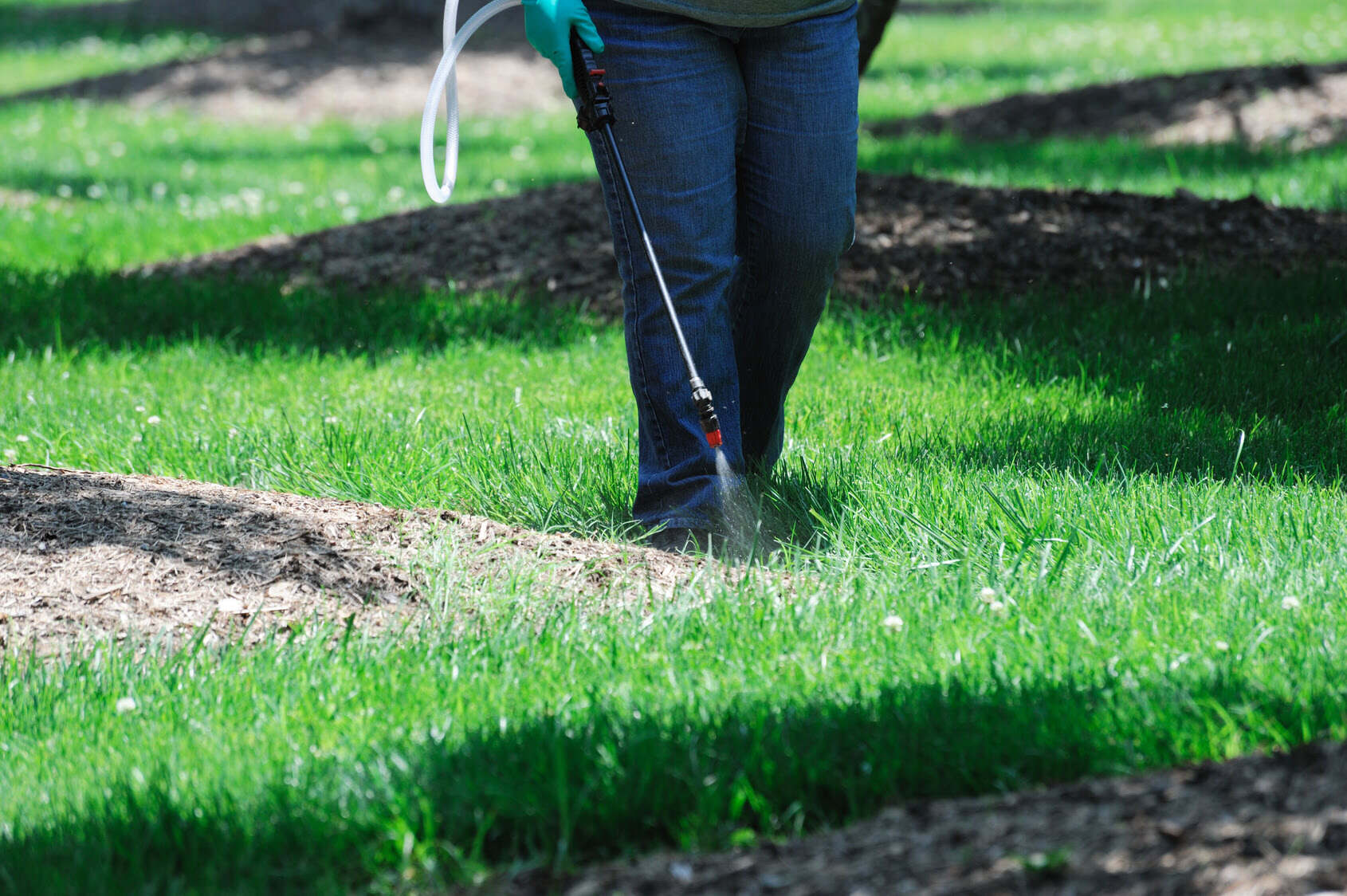
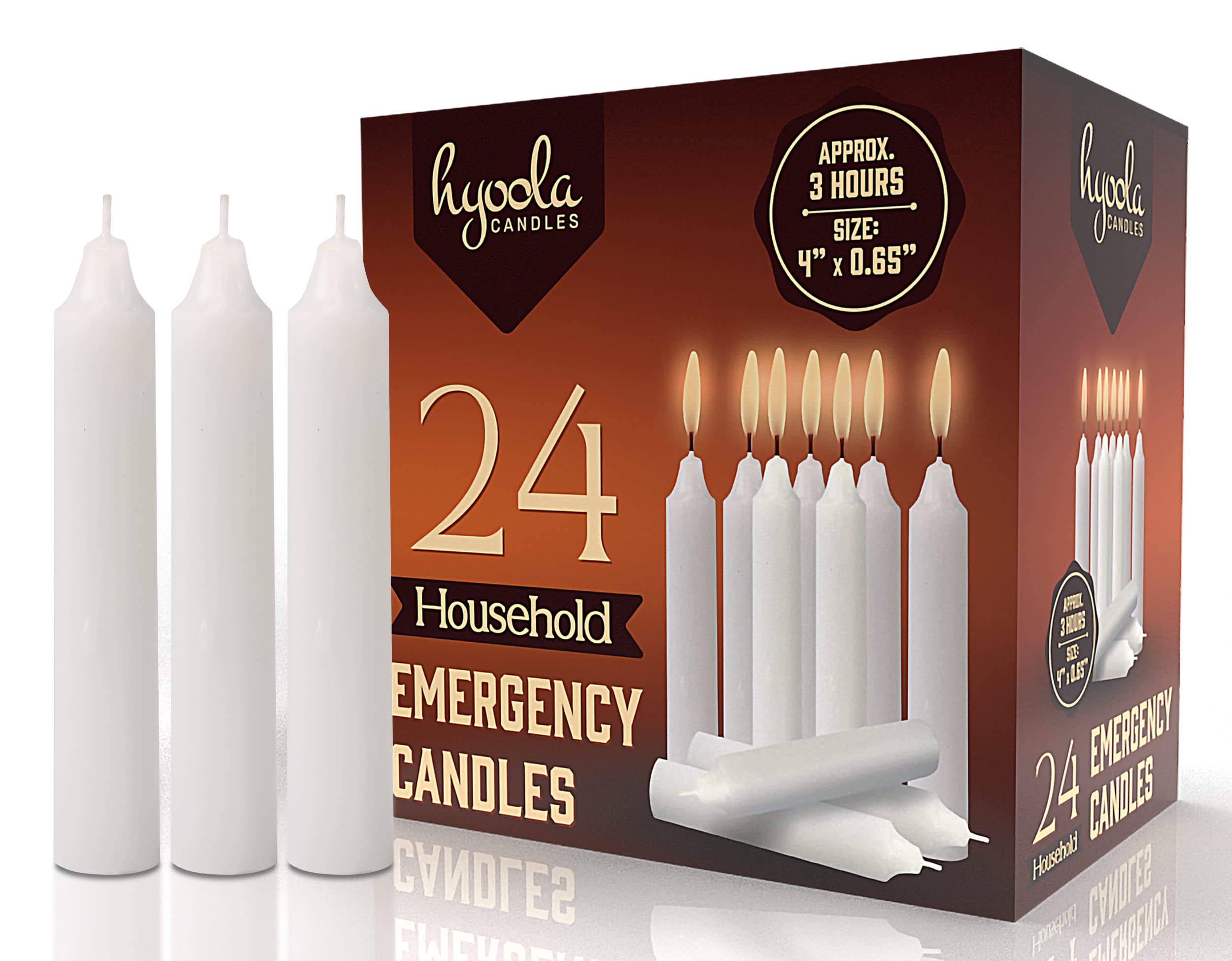
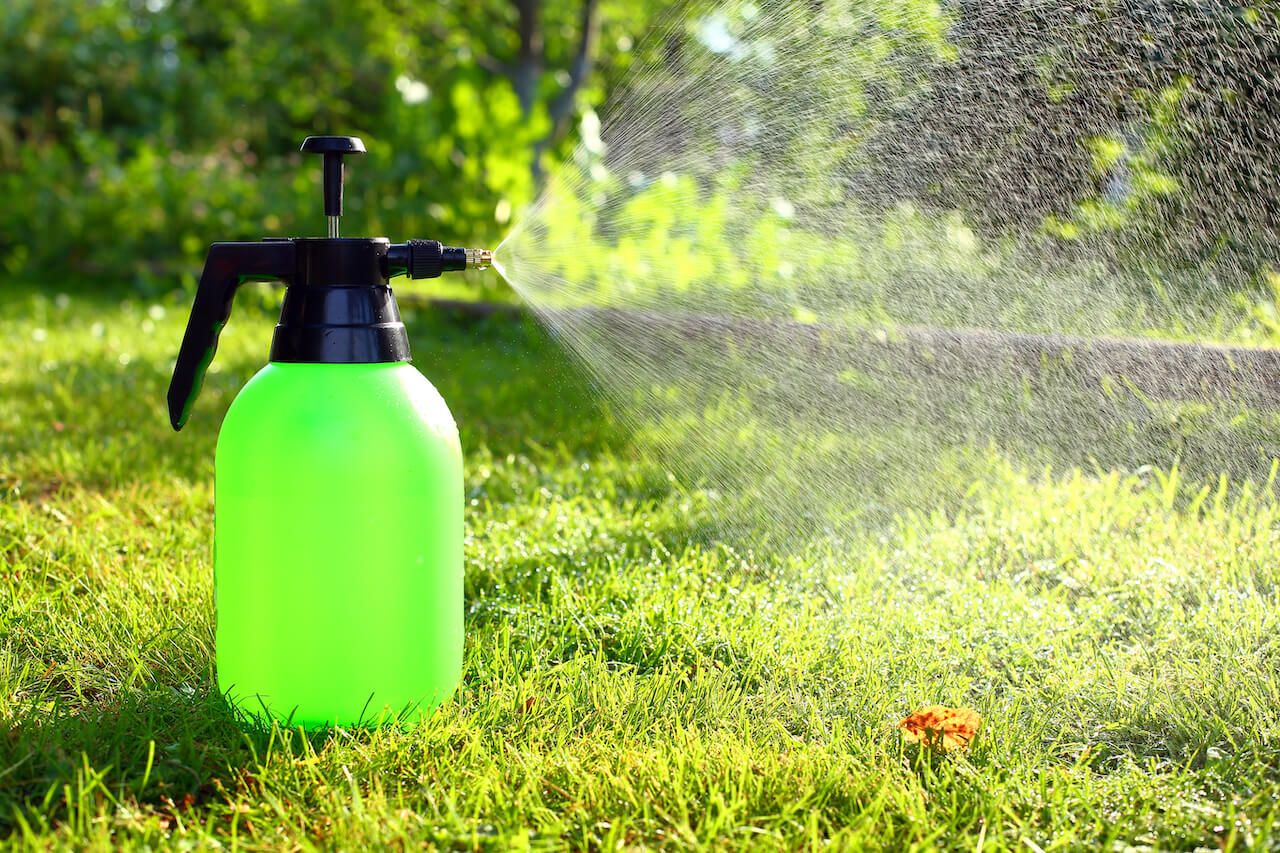

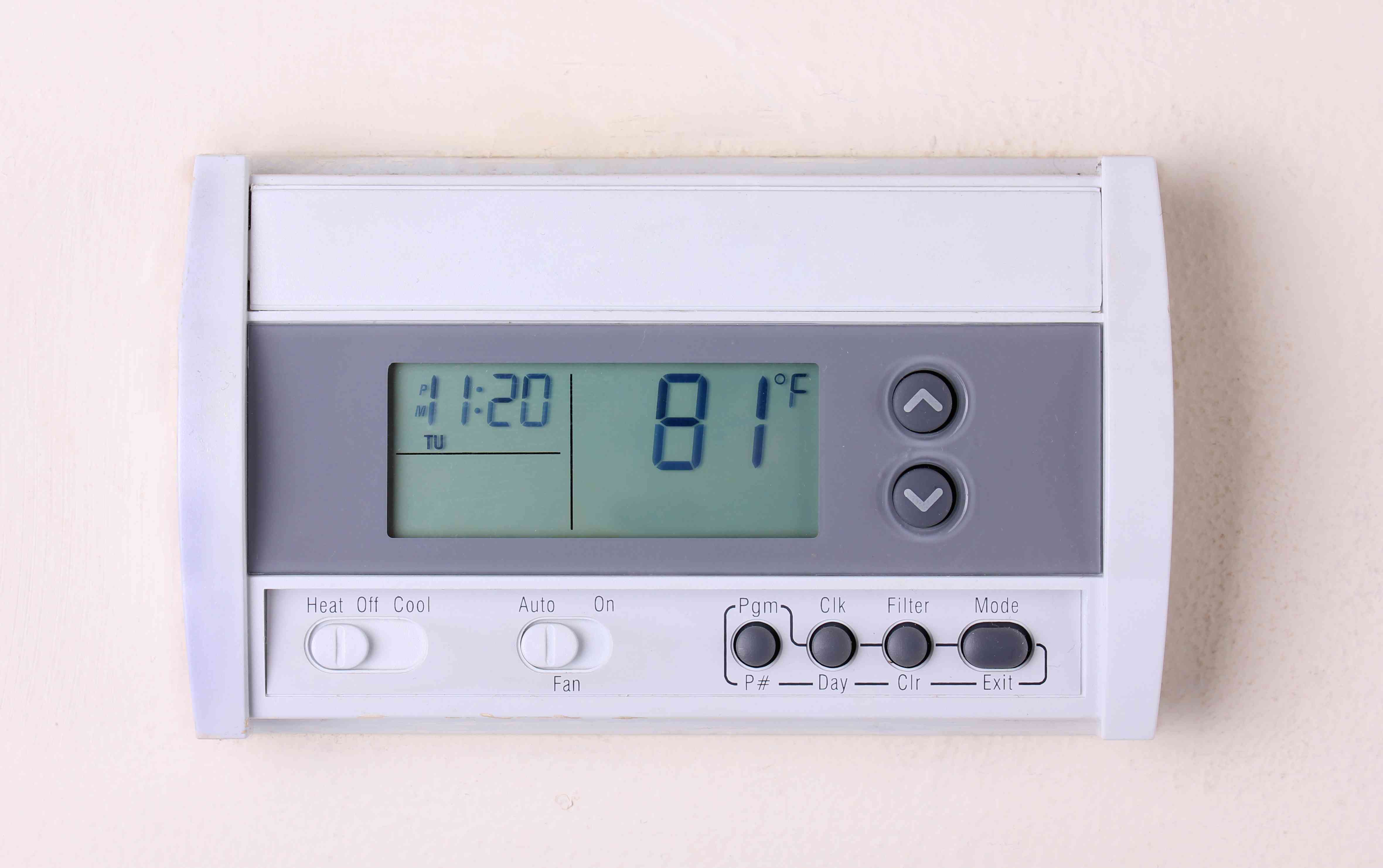


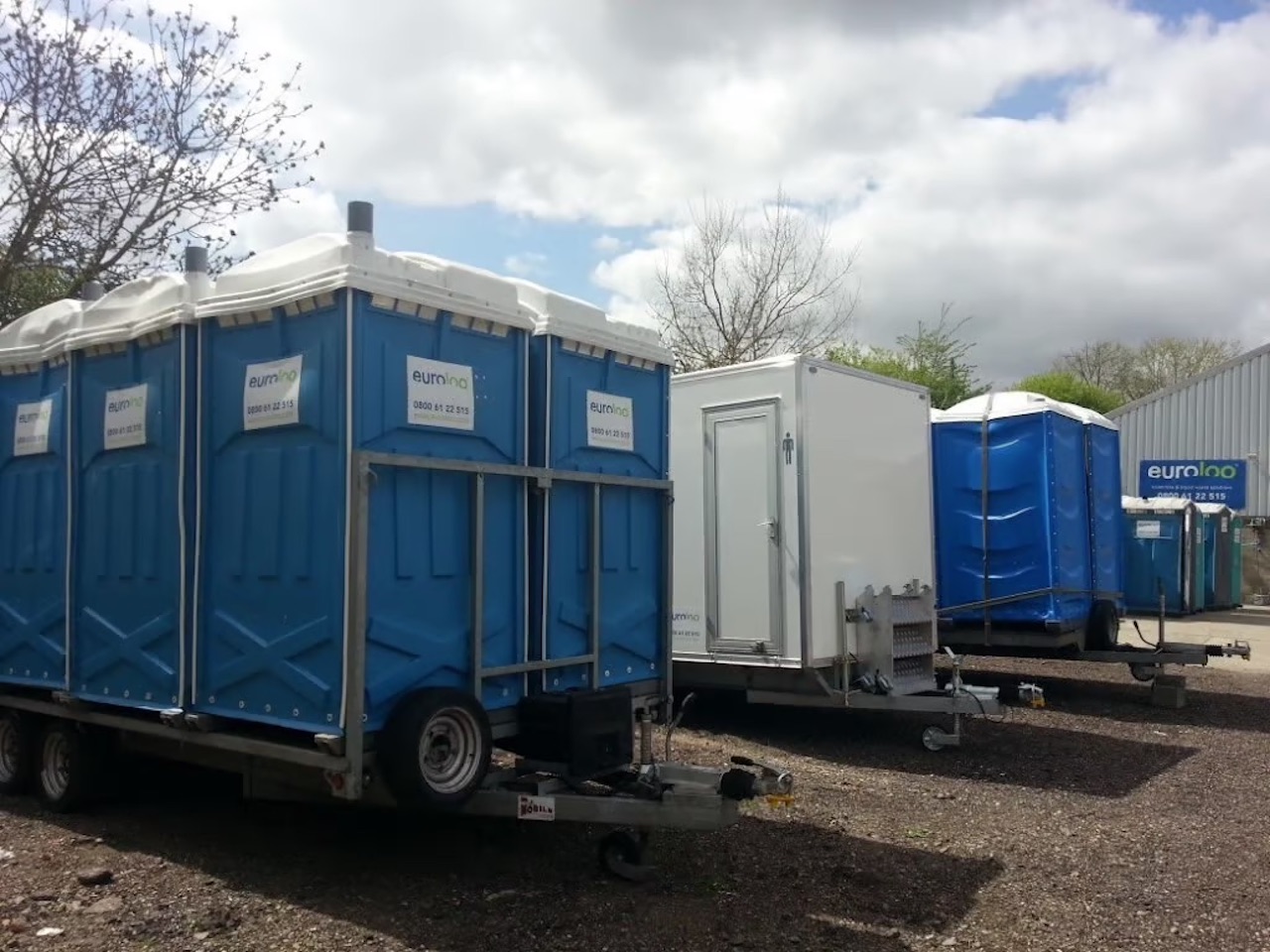

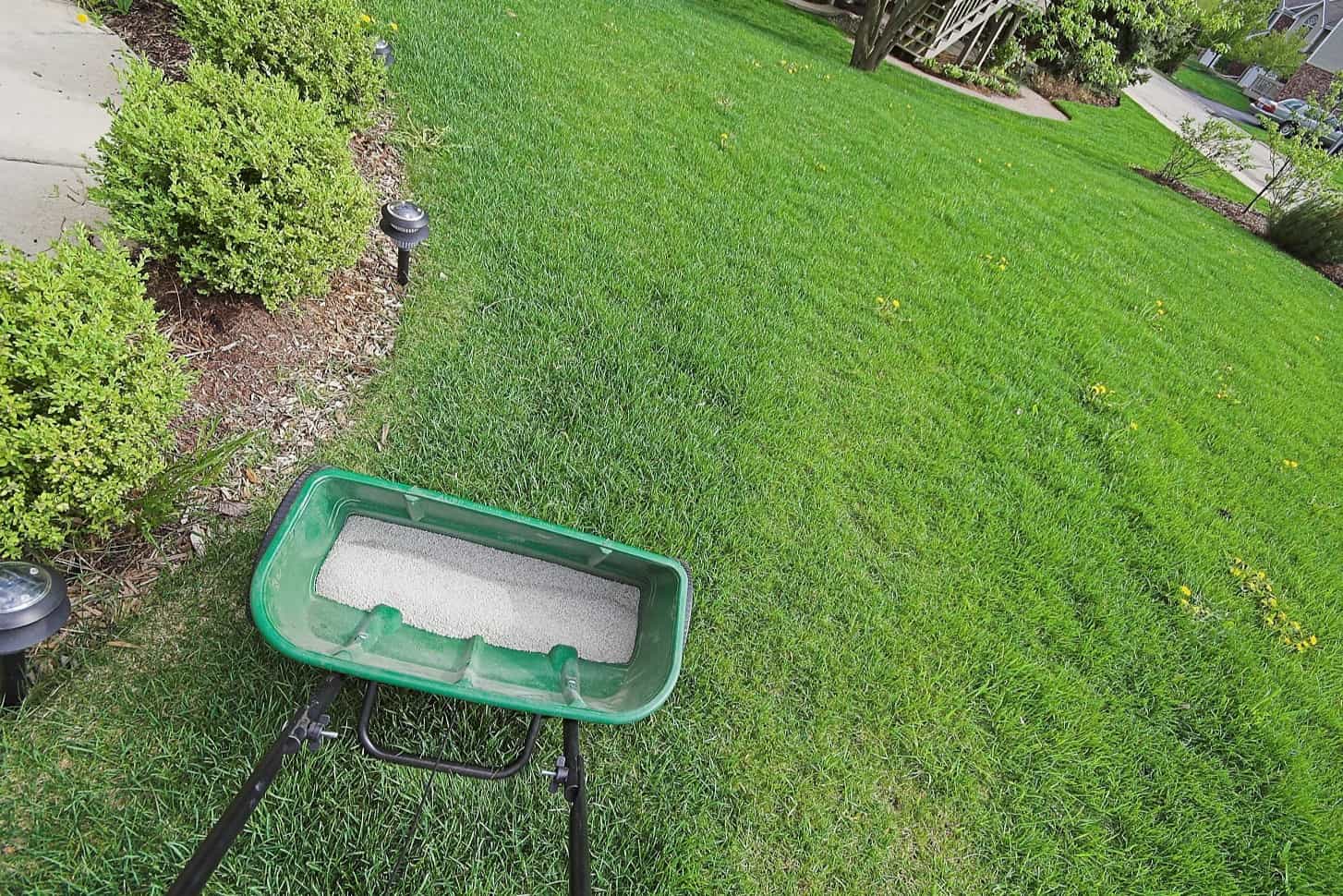


0 thoughts on “How To Store Food For Emergency”